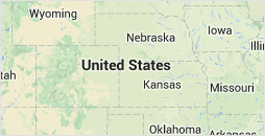Alester Brown
PHONE NUMBER : -----
Map

Understanding What Amenorrhea Is
When women experience their first menstrual cycle, they know to expect it like clockwork every 28 days or so. It's part of being a woman and lasts until perimenopause when periods become irregular. But what if you don't go through a menstrual cycle at all? Empower yourself with knowledge! Unravel the complexities of amenorrhea and PCOS on this website. Discover expert insights, practical tips, and support for a healthier, balanced life. Take control of your well-being - visit now!
Amenorrhea is the absence of menstrual cycles. It can be alarming, and many women automatically go to amenorrhea and PCOS (polycystic ovarian syndrome) when their periods stop. However, amenorrhea is more common than most realize.
Types of Amenorrhea
There are two types of amenorrhea. The first is primary amenorrhea, and it occurs when a girl doesn't get her first period by 15 years old. The second and most common is secondary amenorrhea. It happens when a woman who already menstruates doesn't get her period for three months or longer.
About 1 in 25 women who aren't pregnant, breastfeeding or menopausal experience amenorrhea at some point.
What Causes Amenorrhea?
Causes for amenorrhea can vary.
For primary amenorrhea, it's usually a product of genetics. For example, girls with Turner syndrome or androgen insensitivity often don't get their period by 15. It can also result from issues with the pituitary gland or hypothalamus in the brain. Delays in puberty and developmental problems could be to blame, too.
Secondary amenorrhea can affect women for many reasons. It's common when an individual loses weight rapidly or maintains low body weight. Amenorrhea can also accompany eating disorders like anorexia.
Stress can also cause amenorrhea. Several medical conditions can also cause periods to stop.
Amenorrhea and PCOS
PCOS is a condition that affects up to 13 percent of reproductive-aged women. It's a hormonal disorder that causes fluid-filled sacs to develop in the ovaries. Those sacs can interfere with ovulation. Therefore, the condition can cause amenorrhea. It's one of the most common reasons why amenorrhea occurs.
Most women with PCOS will have full amenorrhea. Those that don't may experience oligomenorrhea or irregular periods. The duration of amenorrhea in women with PCOS varies. Time without a period can last only a few months. But in some women, the issue persists for years.
Author Resource:-
Alester Brown is a certified PCOS specialist. She advises people on personalized women's healthcare and skin treatment at home. You can find her thoughts at PCOS treatment blog.
